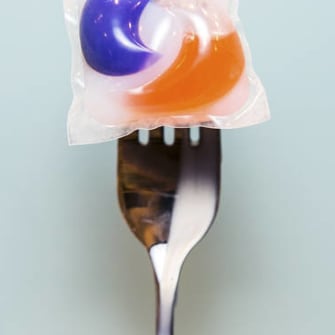
Don’t eat Tide Pods: ‘Tide Pod Challenge’ is simply peer pressure
By Roxanne Cooke
Those bright and colorful laundry detergent “pods” are back in the news, thanks to a trend of teenagers filming themselves biting or eating the pods and challenging others to do the same — dubbed the “Tide Pod Challenge.”
The Washington Post reported that so far in 2018, 37 teens have been exposed to the pods, half of them intentional. Last year, there were 220 cases of teens being exposed, 25 percent of them intentional.
The problem, experts say, is that these pods contain toxic detergent that can cause vomiting, respiratory issues and vision damage if ingested. Consumer Reports reported last summer that in the past five years, two children, as well as six adults with cognitive impairment, have died as a result of eating the pods.
“Ingesting Tide Pods is extremely dangerous,” says Jillian Weissman, MD, a physician with MultiCare Indigo Urgent Care. “A simple word of advice: if a product says do not ingest, then don’t.”
Laundry pods originally made the news in 2012 shortly after they debuted. The single-use packs of detergent are surrounded by a soluble membrane that dissolves quickly when wet. Young children, finding the small, colorful packets appealing, put the pods in their mouths and became ill.
In 2013, 10,145 children 5 years and younger were exposed to the pods, according to the American Association of Poison Control Centers. Exposure doesn’t necessarily mean poisoning or overdosing, just contact with the substance in some way (ingested, inhaled, absorbed by the skin or eyes, for example).
“Children who have ingested detergent from the packets have required medical attention and hospitalization for loss of consciousness, excessive vomiting, drowsiness, throat swelling, and difficulty breathing,” according to a statement from the United States Consumer Product Safety Commission issued in 2013. “Eye contact has also resulted in reports of injury, including severe irritation and temporary loss of vision.”
Manufacturers of the pods reacted by changing the packaging — making the plastic containers opaque rather than transparent and adding a child-resistant latch to the lid — and encouraging parents to keep them out of reach of children.
But now teens are intentionally consuming the pods as a sort of social media stunt. So not only do you have to store the pods out of reach of young children who don’t know any better — you may have to talk to your teen about why it’s dangerous to consume the pods.
“It may sound silly to you, but many teens are drawn to risk-taking and they want the approval of their peers,” says Erin Summa of the Mary Bridge Children’s Center for Childhood Safety. “Have the conversation anyway. Help your teen come up with what they can say to push back when they feel pressured.”
This is an important skill for many other tricky situations teens face, such as the pressure to drink alcohol or get in a car with an unsafe driver, Summa says.
What to do if you suspect your child/teen has ingested a laundry pod or otherwise been exposed:
Call the Washington Poison Center at 800-222-1222 or fill out this brief online form from the American Association of Poison Control Centers for advice.